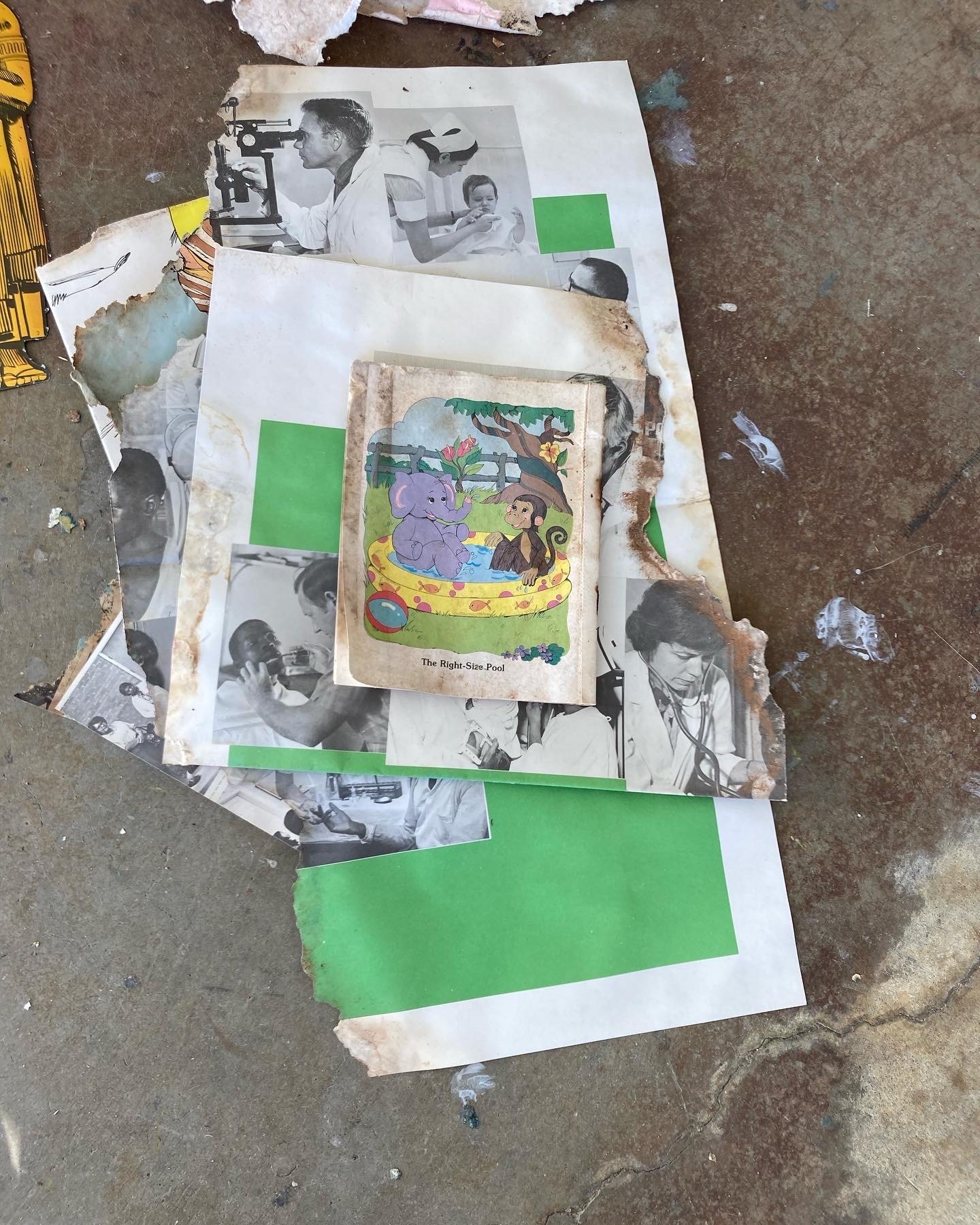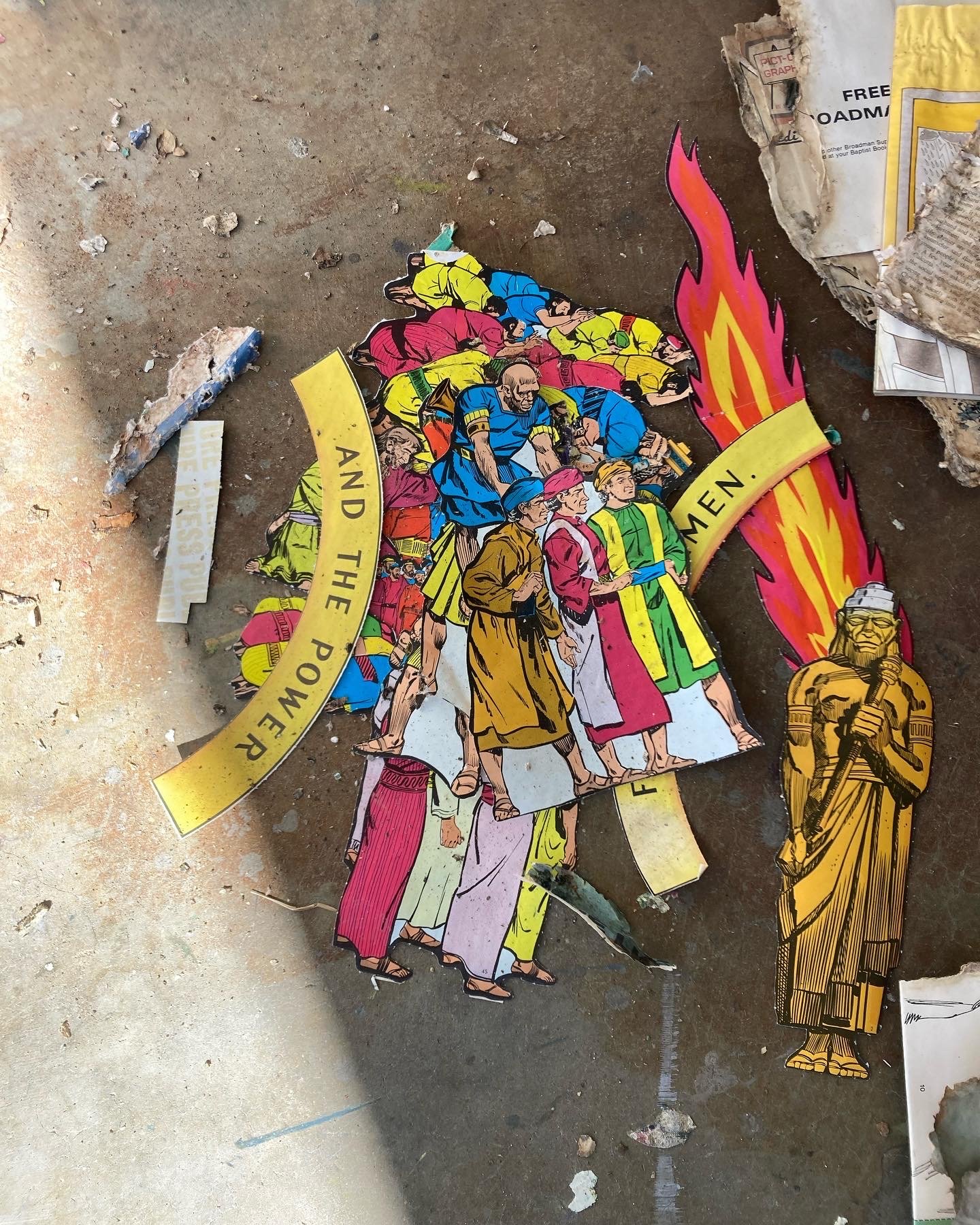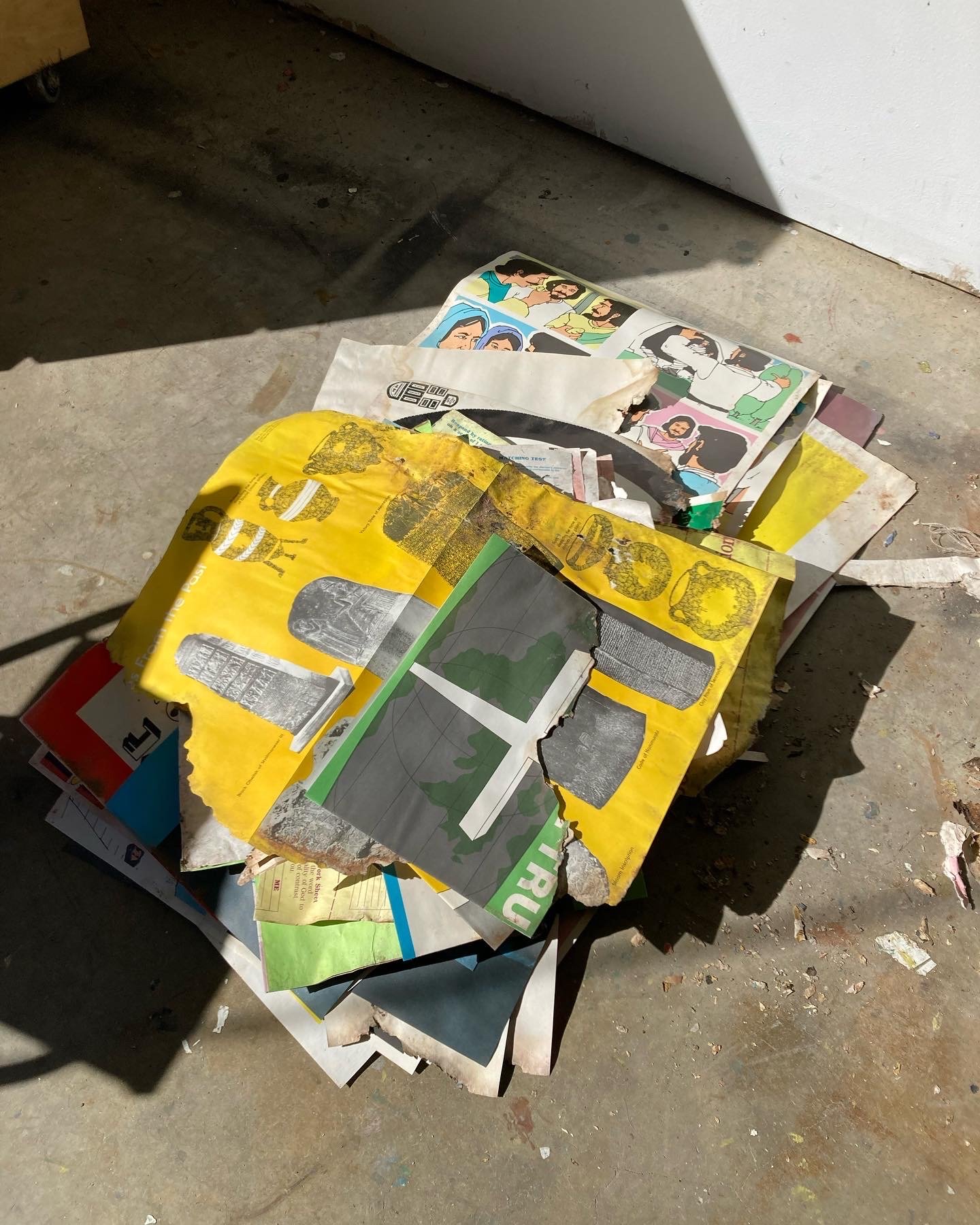Nihil: My Heart’s in the Highlands (My Heart is not Here)
My Heart's in the Highlands (My Heart is Not Here) | Installed in Abandoned Bible School at Fort Sumner, New Mexico
The title of my painting is taken from Arvo Part’s eponymous musical composition, which itself is borrowed from a 1789 poem by Robert Burns. I began referring to Part’s music, and specifically to his tintinnabuli style, about a year ago because I intuited in it a way forward for developing my own structure or dogma for visual artmaking and for what is still becoming the Nihil concept.
Both poem and adagio are quite clearly about homesickness, about not being able to return to a home long gone. The highlands referred to in the poem are specifically Scottish, though when I hear it from Part, I know it to refer to his own exile from Estonia by the Soviet Union, the same exile which led him to develop a style of composing for which he became best known. And though, unlike Burns or Part, I’ve never been forced into exile, I nevertheless experienced it as a real social and economic force even before leaving Los Angeles, but especially since arriving in rural New Mexico. Yet inherent to the story of Part’s exile is the story of artistic transformation, and it’s in this reality that I find greater liberation as an artist.
Collage Materials Gathered From Abandoned Bible School In Fort Sumner, New Mexico
Among the Tenets of Nihil is the ideal of using materials found in the spaces I encounter along the route I’m traveling throughout New Mexico. Once I discover a way to work with the materials and objects, I must then, if only briefly, return them to the place in which they were found. The collage elements that give the painting its material heft are pages from Baptist religious tracts and educational material that I found left behind in the abandoned bible school. All these materials were published in the 70’s and 80’s, so I know the school was still in use then. In fact, I believe it was in use until around the start of the 2000’s.
My Heart's in the Highlands (My Heart is Not Here) | Mixed Media, Collage on Canvas | 60 x 48 in. | 2022
Color is also determined by the Nihil dogma. As with Part’s triads arranged contradistinctively from a singular voice or note, colors here are determined first by three layers that must be matched to colors appearing on the printed tracts. Then, from the mixture and accumulation of the three colors, the resulting single color (almost a non-color) is slathered on top of the three. This process can repeat as many times as necessary to give the proper weight to the object. The underlying colors, as always, are partially retrievable as well, as the material process makes it possible to dig beneath top layers.
Perhaps the oddest and most surprising aspect of the piece is that although it appears almost as a minimalist color field, it is neither minimal nor abstract, but heavily worked to the point of abuse, and, finally, figurative. If it can’t be seen in reproduction, there is a central androgynous torso appearing in the middle of the piece, from neck to hips. This was achieved in a quick and spontaneous flurry of activity using mechanical attachments on my drill applied in only a single direction. With all the wax mixed into the paint, light is reflected or absorbed differently depending on which direction it’s applied. This means the torso is easier or more difficult to distinguish depending on the distance and angle of the viewer in relation to it.
This process is itself an embodiment of exile as a metaphysical condition. If, for me, the anxiety of exile began while still living in California, it was because I could no longer avoid the reality of my own irrelevance or remain hopeful, after fifteen years, that anything would ever change. Once I arrived to New Mexico, it became possible to relax into the new reality that I could afford to continue making art without wider validation, but only if my mind wasn’t coerced back into the social and political abstractions of the art world. In a way, I had found a hole in which to disappear from that world, and though I had only to surrender to it in order to be happy, I thought too often of happiness as a kind of feeble-mindedness. And so, while I could be happy and alive in my thinking for a day or two, the wave of depression would always return, and a miserable sense of my own failure to matter in the larger world overwhelmed me.
My Heart's in the Highlands (My Heart is Not Here) (Detail) | Installed in Abandoned Bible School at Fort Sumner, New Mexico
The word “highlands” is too perfect for describing this essential paradox. On the one hand, it could be thought of as a kind of promised land, something to do with heaven or somewhere better than earthly existence. But “highlands” also implies being closer to the sky, farther from the earth, something airier, thinner, farther out of reach. It’s the yearning itself that seems to be the real cause of suffering, which obscures the richness and solidity of accepting a reality that is within reach, that can be touched and held, and in any case regarded in real life, not in fantasy. I would argue that we are our most authentic selves when being is rooted in the natural world, quite apart from aspirational ideals of social or financial success or even spiritual claims of transcendence. Yet to do this, there seems to be a pull toward broken heartedness, not as a kind of condemnation but as a means through which to open ourselves more broadly, to become more aware of and receptive to the tangible world. In this way, the title “My Heart’s in the Highlands, My Heart is not Here,” implicitly asks us to let the ideal of the highlands go, to be exactly where we are, in the real world. The “here” in the title then can be understood as where the heart is meant to be now. As we know with Part, it was in exile that his heart was opened to the transformation that made his most important musical innovations possible (his eventual return only decades later).
Installing the work in the abandoned bible school made it possible for me to see the piece in a different way. The flecks of yellow in the piece, which always looked to me like sparks (I can’t help thinking of this in the Gnostic sense) appear to be in relation to the coruscating shards of light floating across the surface from the holes in the collapsing roof. I don’t think this needs to mean anything to be experienced richly, but to see it this way had the effect of setting me free. As with many of the other works in the install, it fell into the background of the space, light, and sound. Just another object in the cathedral of objects, innumerable, and therefore, somehow, at home in the emptiness of the whole.
My Heart's in the Highlands (My Heart is Not Here) | Installed in Abandoned Bible School at Fort Sumner, New Mexico







